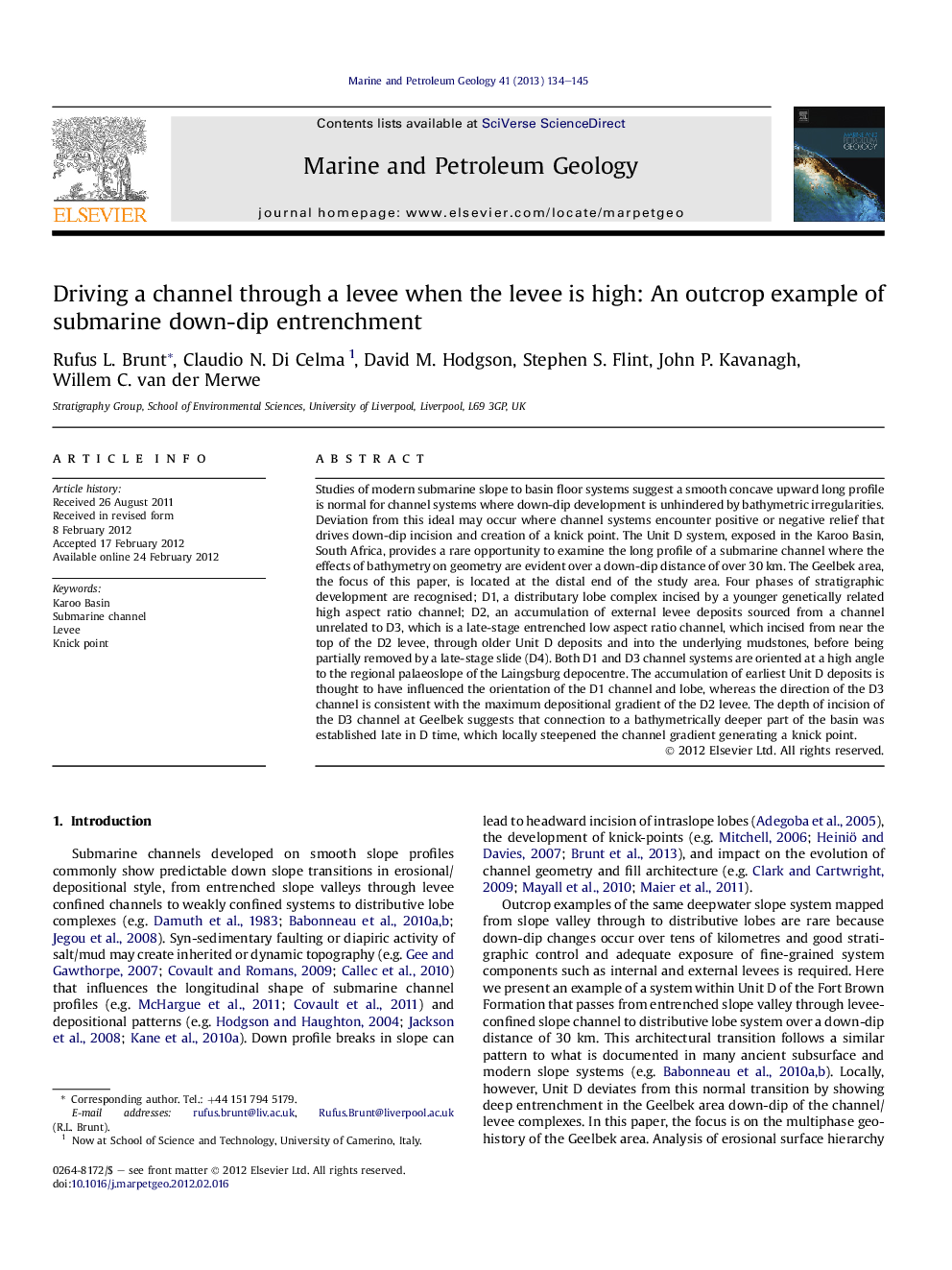| Article ID | Journal | Published Year | Pages | File Type |
|---|---|---|---|---|
| 4695774 | Marine and Petroleum Geology | 2013 | 12 Pages |
Studies of modern submarine slope to basin floor systems suggest a smooth concave upward long profile is normal for channel systems where down-dip development is unhindered by bathymetric irregularities. Deviation from this ideal may occur where channel systems encounter positive or negative relief that drives down-dip incision and creation of a knick point. The Unit D system, exposed in the Karoo Basin, South Africa, provides a rare opportunity to examine the long profile of a submarine channel where the effects of bathymetry on geometry are evident over a down-dip distance of over 30 km. The Geelbek area, the focus of this paper, is located at the distal end of the study area. Four phases of stratigraphic development are recognised; D1, a distributary lobe complex incised by a younger genetically related high aspect ratio channel; D2, an accumulation of external levee deposits sourced from a channel unrelated to D3, which is a late-stage entrenched low aspect ratio channel, which incised from near the top of the D2 levee, through older Unit D deposits and into the underlying mudstones, before being partially removed by a late-stage slide (D4). Both D1 and D3 channel systems are oriented at a high angle to the regional palaeoslope of the Laingsburg depocentre. The accumulation of earliest Unit D deposits is thought to have influenced the orientation of the D1 channel and lobe, whereas the direction of the D3 channel is consistent with the maximum depositional gradient of the D2 levee. The depth of incision of the D3 channel at Geelbek suggests that connection to a bathymetrically deeper part of the basin was established late in D time, which locally steepened the channel gradient generating a knick point.
► We describe a 30 km long profile section of the Unit D system, Laingsburg Karoo. ► Depositional features with counter-regional orientations are seen in down-dip areas. ► Axial channel exhibits down-dip re-entrenchment, resolvable at outcrop scale. ► Primary control is inherited sea floor topography and growth of depositional bodies.
